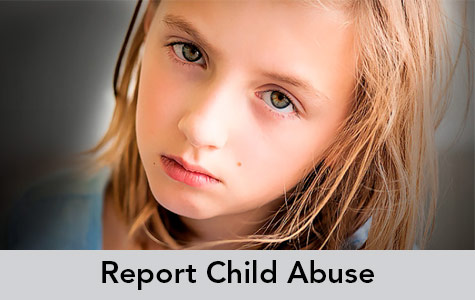
Know the Signs: Physical Abuse
Physical abuse is nonaccidental physical injury (ranging from minor bruises to severe fractures or death) as a result of punching, beating, kicking, biting, shaking, throwing, stabbing, strangulation, hitting (with a hand, stick, strap, or other object), burning, or otherwise harming a child, inflicted by a parent, caregiver, or other person who has responsibility for the child. Such injury is considered abuse regardless of whether the caregiver intended to hurt the child.
Physical Signs in Children
Some physical signs in children include:
- Any injury where the history provided does not match the age/developmental status of the child
- Any injury where the severity of the injury does not match the history provided
- Unexplained injuries or injuries where there is a delay in care without good reason
- Skin injuries that appear to have a pattern
- Any bruising or oral injuries in an infant not yet walking
- Bruising to the torso, ears, neck, cheeks, around the eyes or on the whites of the eyes, especially in children under the age of four years
- Fractures in young children without an adequate explanation, especially those around joints, of the skull, multiple fractures, or fractures accompanied by other injuries
- Burns to the buttocks and/or genital area, to both lower or upper extremities, to the face, or that have a pattern (such as a cigarette lighter or other object)
- Head injuries including bleeding under the scalp or on/in the brain in young children
Behavioral Signs in Children
Physical abuse may also result in behavior that seems out of the ordinary.
A child may:
- Be self-destructive, aggressive, or withdrawn
- Run-away frequently
- Explain their injuries in strange or inconsistent ways
- Seem afraid of adults, including parents or guardians
- Intentionally hurt animals
- Report that an adult is hurting them
Signs in the Parent
Also with physical abuse, consider signs in the parent as well.
A parent may:
- Perceive the child as being bad or difficult or consistently talk about the child negatively
- Use harsh discipline or instruct teachers or caregivers to use harsh punishment for misbehavior
- Have been disciplined severely or physically abused as a child themselves.
- Demand an unrealistic level of performance from the child for his/her age and/or ability
- Use extreme forms of physical punishment
- Offer no explanation, or a conflicting or unconvincing explanation, for the child's injury
- Have abused animals or pets
 Know the Signs |
Neglect
Know the Signs |
Neglect